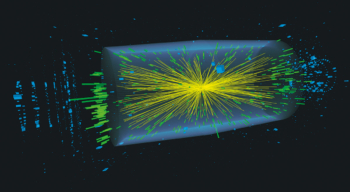CERN’s Information and Programming Technology (IPT) group has exploited the World Wide Web to make it easier to keep track of masses of computer code. Lifecycle Global Hypertext (LIGHT) was so successful when applied to the ALEPH experiment that it is now being taken up around the world.
The software for a big particle physics experiment can run to tens of thousands of lines of code, organized into hundreds of routines written by dozens of people in many institutions, and often has code from independent program libraries folded in too. It can have a lifetime of over a decade during which it is constantly evolving. No wonder newcomers to an experiment can find it daunting.
The traditional way of finding a way around all this involves the printed word: a bookshelf full of manuals to wade through as well as the source code itself. But help is now at hand thanks to LIGHT, originally developed for CERN’s ALEPH experiment and since adopted by many other experiments around the world.
Paolo Palazzi had the idea for LIGHT in 1993 and it was subsequently developed by members of CERN’s IPT group. The idea was to make all the necessary information available through a Web interface. A click on a subroutine call in a big program, for example, would take you to that routine’s source code, and a click on the code would take you to the documentation. Having built your program from all the different packages available and plugged in your own specific code, you would then be able to submit it through a Web-based template so that your complete analysis could be conducted through the Web.
The ALEPH-specific implementation of LIGHT was ready in 1995, and is now used on all of ALEPH’s main off line software. True to its name, ALEPH LIGHT will manage the software for the lifecycle of the experiment any new code or updates to old routines appearing automatically at the end of hypertext links.
In 1997 the IPT group decided to make LIGHT available generally, and under Alberto Aimar’s co-ordination it was re-engineered and the project was re-organized. Other experiments soon followed ALEPH, with CERN’s DELPHI showing what they thought of the system by giving their customized version the name “Delight”.
Others to follow are ATLAS at CERN, BaBar at Stanford in California, and KLOE at Italy’s Frascati laboratory. With a second version of LIGHT under development, making it easier to add new formats and languages, the product is set to reach a wider range of experiments and projects. The software remains as complex as ever, but with LIGHT all information is just a click away.





